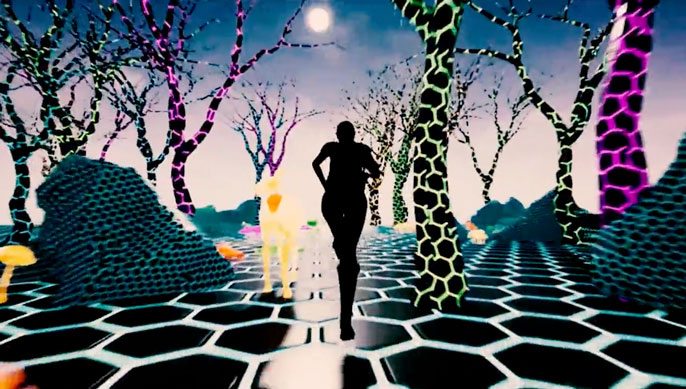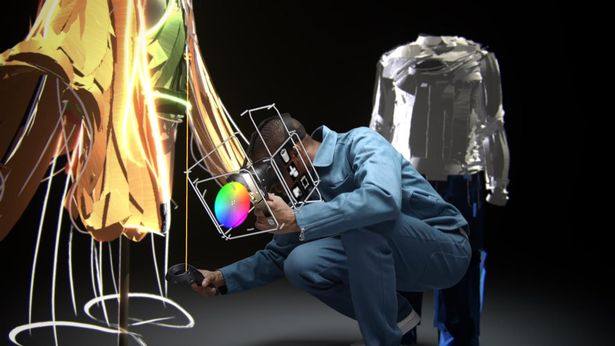Knight Foundation in a $750,000 Drive to Support Immersive Technology for the Arts
Efforts to apply immersive technologies in the arts are just about to get a huge boost thanks to a $750,000 injection of funds by various financiers. The John S. and James L. Knight Foundation is one of the institutions that is injecting funds into a $750,000 pool towards the initiative. The Foundation is currently prospecting for pitches on how the creative arts can be enhanced and augmented through the use of immersive technologies.

The Foundation has partnered with Microsoft to provide not just the funding but also the technical support (which will come from Microsoft) and will include mentoring in the mixed reality technologies as well as giving artists access the Microsoft’s suite of mixed reality technologies for their creative work.
The Knight Foundation sees immersive technologies as a means of reaching new audiences while also engaging existing audiences in entirely new ways. The Foundation hopes to plug in the knowledge and technical expertise required by arts institutions to be proficient in these technologies and to leverage them to their full potential.
The Knight Foundation is specifically looking for the immersive projects that will help in engaging new audiences, building of newer service models, expanding access to arts to audiences in the wider world beyond the walls of the arts institutions and also creating channels through which immersive experiences can be distributed to multiple locations.

The Knight Foundation wants to tap into the life-changing experiences that can occur at the intersections between technology and arts. Through its call for art projects, the foundation is aiming at helping cultural institutions to develop more informed and refined practices that will help them leverage these new technologies by equipping them with the knowledge and resources to help them navigate and thrive in the digital age more successfully.
The new initiative was launched at the Gray Area Festival which took place in San Francisco and it is part of Knight Foundation’s new focus on art and technology. The organization wants to use the initiative in order to better the meet the changing need expectations of arts audiences in the modern era. In 2018, the Knight Foundation invested a total of $600,000 in some 12 projects that emphasized the use of technology in helping people engage with the arts. Immersive technology offers the chance to better enhance the ability to relay richer experiences, bring out broader engagement and deliver deeper storytelling.
The winners of last year’s $600,000 funding pool included the following:-
- ArtsESP: Project by Adriene Arsht Center for the Performing Arts. The Project lead is Nicole Keating (Twitter: @ArshtCenter). The project was on developing forecasting software that can be used by cultural institutions to make data-centered decisions when planning their events and seasons.
- Exploring the Gallery Through the Voice: By Alley Interactive. The Project Lead was Tim Schwartz (Based in New York. @alleyco, @SinaBahram, @cooperhewitt). The project explores how conversational interfaces such as Alexa and Amazon can give remote audiences access to exhibition experiences at Smithsonian Design Museum, Cooper Hewitt.
- The Bass in VR: By The Bass. Project lead is T.J. Black (Miami Beach, @TheBassMoA). Uses 360-degree photography technology in capturing and sharing exhibit experience through an engaging and virtual experience for remote audiences.
- AR Enhanced Audio Tour: By Crystal Bridges Museum of American Art. Project lead is Shane Richey (Bentoville, Arkansas; @crystalbridges). Project on developing mobile software for delivering immersive audio-only stories which can be experienced by the museum visitors as they walk up to art pieces to get a closer look.
- Smart Label Initiative: By Eli and Edythe Broad Art Museum based at Michigan State University. Project lead: Brian Kirschensteiner. Based in East Lansing, Michigan. @msubroad. Initiative to create smart labels which combine microcomputers and ultra-thin displays to provide audiences with interactive informational content on artwork.
- ConcertCue: MIT Center for Art, Science & Technology. Project lead is Eran Egozy (Cambridge, Massachusetts, @EEgozy, @MIT_SHASS, @ArtsatMIT, @MIT). Project is on building a mobile app for classical music audiences. App receives the real-time program notes at the precisely-timed moments during a live musical performance.
- Civic Portal: Monument Lab. Project lead: Ken Lum and Paul Farber. Based in Philadelphia. @monument_lab, @SachsArtsPhilly, @PennDesign, @paul_farber. Civic Portal fosters public input on new forms of historical monuments through the use of a digital tool that enables the users to identify the locations, topics and to create designs for potential public art and monuments in cities.
- Who’s Coming? By The Museum of Art and History located at the McPherson Center. Project lead is Nina Simon. Based in Santa Cruz California. Twitter: @santacruzmah, @OFBYFOR_ALL. Project prototypes a tool in the form a tablet or smartphone app that cultural institutions can use to capture the visitor demographic data. This helps increase knowledge or insights into the people who are participating in the cultural institution’s programs.
- Feedback Loop: By Newport Art Museum working in partnership with Work-Shop Design Studio. Project lead is Norah Diedrich. Based in Newport, Rhode Island. Twitter: @NewportArtMuse. The project enables audiences to share their reflections and immediate feedback on art. It involves the design of the hardware and software for use in test-recording and sharing the audience’s thoughts.
- Wiki Art Depiction Explorer: By Wikimedia District of Columbia working in partnership with the Smithsonian Institution. Project lead is Andrew Lih. Based in Washington, DC. Twitter: @fuzheado, @wikimedia. Project leverages crowdsourcing techniques to improve the descriptions on the Wikipedia artworks in the major collections to help enhance the access and understanding of the art virtually.
- The Traveling Stanzas Listening Wall: By the Wick Poetry Center at the Kent State University Foundation. Project lead: David Hassler Twitter: @travelingstanza, @DavidWickPoetry, @KentState, @WickPoetry. Based in Kent, Ohio. Produces touchscreen installations in public locations which enable users to create and share poetry based on reflections on and responding to oral histories, historical documents as well as multimedia stories on the current events and community issues.

